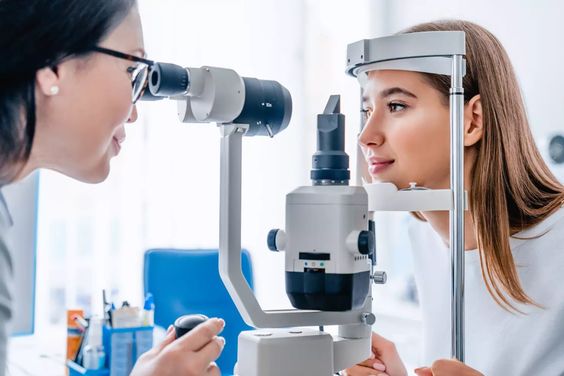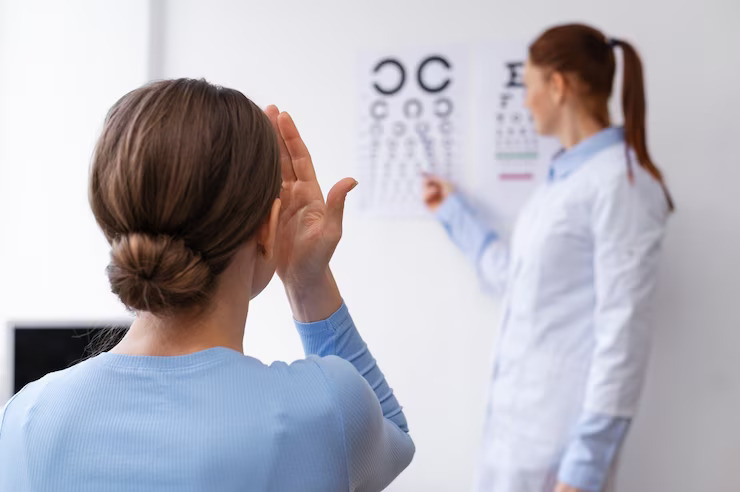Technology Advancements in Eye Examinations
In the realm of healthcare, technological advancements have revolutionized various fields, and eye care is no exception. Over the years, the tools and techniques employed in eye examinations have undergone significant improvements, enhancing the accuracy of diagnoses and the overall patient experience. This article delves into the cutting-edge technology that has transformed the landscape of eye examinations, contributing to more precise assessments, early detection of conditions, and personalized treatment plans.
Automated Refraction Technology
Traditionally, determining a patient’s prescription involved a series of manual tests and subjective feedback. However, with the advent of automated refraction technology, the process has become more streamlined and efficient. Automated refractors use computerized algorithms to assess the eye’s refractive error, providing quick and accurate prescription measurements. This not only reduces the margin of error but also enhances the patient’s experience by minimizing the subjectivity associated with manual refraction.
Optical Coherence Tomography (OCT)
One of the most groundbreaking technologies in eye examinations is Optical Coherence Tomography (OCT). This non-invasive imaging technique allows for detailed cross-sectional images of the retina, providing valuable insights into the layers of the eye. OCT is instrumental in the early detection and monitoring of various eye conditions, including macular degeneration, glaucoma, and diabetic retinopathy. Its high-resolution images enable eye care professionals to visualize subtle changes in the eye’s structure, facilitating timely intervention and personalized treatment plans.
Digital Fundus Photography
Digital Fundus Photography has replaced traditional film-based methods, offering a more efficient and accessible way to capture detailed images of the back of the eye. High-resolution digital cameras capture images of the retina, optic nerve, and blood vessels, allowing for a comprehensive assessment of ocular health. These images can be easily stored, shared, and compared over time, aiding in the documentation of progression or regression of eye conditions.
Automated Visual Field Testing
Visual field testing is crucial for assessing peripheral vision, a key aspect in the diagnosis and management of conditions like glaucoma. Traditional visual field tests involved manual and time-consuming processes. However, automated visual field testing has transformed the experience for both patients and practitioners. Advanced algorithms and integrated technologies enable quicker and more accurate assessments of the visual field, facilitating early detection and monitoring of conditions affecting peripheral vision.
Telemedicine and Remote Monitoring
The rise of telemedicine has significantly impacted the field of eye care. Through telehealth platforms, patients can now connect with eye care professionals for remote consultations and follow-ups. Additionally, wearable devices equipped with monitoring capabilities allow for continuous tracking of certain eye conditions, providing real-time data to healthcare providers. These technological advancements not only enhance accessibility to eye care services but also enable more proactive and personalized management of ocular health.
Smart Contact Lenses
In recent years, smart contact lenses have emerged as a novel technology in the realm of eye care. These lenses are equipped with sensors and microelectronics to monitor various aspects of ocular health, such as intraocular pressure and glucose levels in tears. For individuals with conditions like glaucoma or diabetes, smart contact lenses offer a continuous and non-invasive method of monitoring, allowing for early intervention and improved management of these chronic conditions.
3D Printing in Prosthetics and Custom Eyewear
The application of 3D printing technology has extended to the field of vision care, particularly in the creation of prosthetic eyes and custom eyewear. 3D printing allows for the production of highly customized ocular prosthetics that closely match the patient’s anatomy, providing a more natural and comfortable appearance. Additionally, custom eyewear, including frames tailored to the individual’s facial structure, has become more accessible, combining aesthetics with optimal vision correction.
Artificial Intelligence in Diagnostics
Artificial intelligence (AI) has made significant inroads in the field of diagnostics, and eye care is no exception. AI algorithms can analyze large datasets of medical images, aiding in the early detection of various eye conditions. For example, AI systems can assist in identifying patterns associated with diabetic retinopathy, enabling timely intervention to prevent vision loss. The integration of AI in eye examinations not only enhances diagnostic accuracy but also accelerates the decision-making process, ultimately benefiting patient outcomes.
Conclusion
As technology continues to advance, the landscape of eye examinations evolves, offering unprecedented benefits in terms of accuracy, efficiency, and patient-centric care. From automated refraction technology to the integration of artificial intelligence, these innovations empower eye care professionals to make more informed diagnoses and tailor treatment plans to individual needs. The ongoing synergy between technology and eye care holds the promise of further breakthroughs, ensuring that individuals receive the highest standard of vision care in an era of rapid technological advancement.







